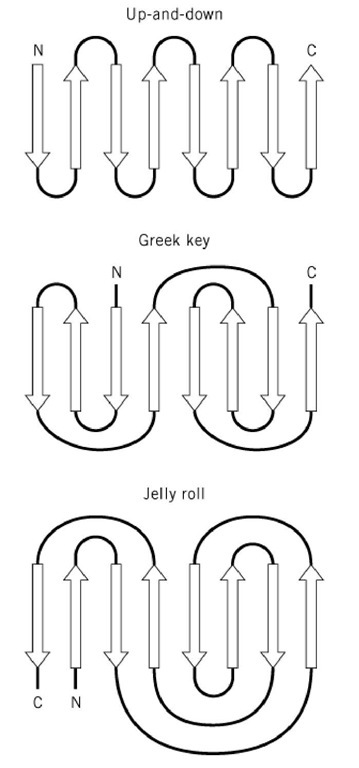Antiparallel b-barrel motif is a general term that describes several protein motifs observed in protein structures that have in common a barrel-shaped b-sheet structure formed from antiparallel beta-strands. These include the b-barrel, the Greek key barrel (formed from two Greek key motifs), and the jelly roll barrel (Fig. 1). The different motifs have different connections between the strands in the barrel. Other types of antiparallel b-barrels include the interleukin-1 motif and the neuraminidase superbarrel. All these protein barrels comprise only antiparallel b-strands and are therefore classified as all-b structural domains. They therefore differ significantly from the TIM barrel, which is classified as an a/b domain and is formed from a parallel b-barrel surrounded on the exterior by a-helices.
Figure 1. Schematic representation of the up and down (or b-meander), Greek key, and jelly roll topologies.
Antiparallel b-barrels can be formed from each of these three protein motifs, which represent different ways of linking consecutive b-strands together into a b-sheet.

